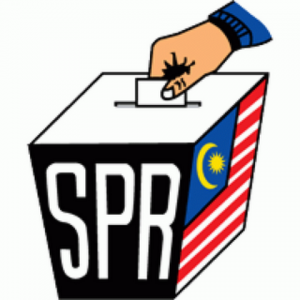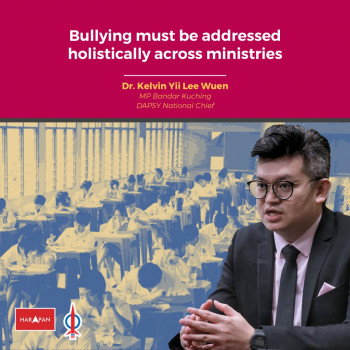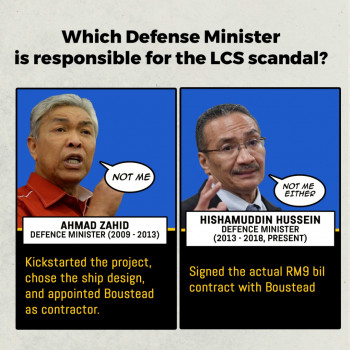By Ong Kian Ming
 After more than a year of rumor mongering and speculation, the latest window for the impending 13th general election is early November, 2012 before the start of the SPM exams as well as the east coast Monsoon season.
After more than a year of rumor mongering and speculation, the latest window for the impending 13th general election is early November, 2012 before the start of the SPM exams as well as the east coast Monsoon season.
How ready and prepared is Pakatan Rakyat (PR) if Najib were to dissolve parliament in October, after a favorable goodies-laden budget, and if the Election Commission (EC) were to set polling day on either the 3rd or 4th of November, 2012? More importantly, is PR ready to make the push for Putrajaya in November?
The simple answers to both these questions are YES and YES.
This does not mean that PR has crossed all t’s and dotted all i’s in terms of its election preparations. Some issues cannot be finalized until parliament is dissolved and this applies for the BN as well as PR. Seat negotiations and allocations have to be finished. The candidates’ lists have to be confirmed. The elections machinery needs to mobilised. The dissolution of parliament will provide the momentum to work through all these issues. But make no mistake; PR is much more ready to take the BN on, especially compared to GE2008.
There are many more PR incumbents compared to GE12 in 2008 – 76 MPs and 191 ADUNs to be exact (not including the independents and the Sarawak ADUNs elected in the 2011 state elections). These PR reps will be in a much better position to mobilize resources and election workers to defend their seats.
Even in PR seats where new candidates will be fielded, the already established machinery would give these candidates a leg up, especially compared to the ad hoc campaign strategy in 2008. We would also expect more volunteers to come out and support various PR campaigns especially since many anticipate a closely contested GE which may involve a historic change in government.
This time, candidates can also count on the support of the PR component parties. The intra-PR coordination and cooperation, honed by the many by-elections in the past 4 years, has come a long way since 2008, when PR did not even exist.
This may turn out to be the difference maker, especially in marginal Malay majority seats, where a significant Chinese minority of between 20% to 40% voting disproportionately for PR, can help swing these seats in the opposition’s favor.
The DAP can play the role of game changer in these seats in terms of mobilizing Chinese support for PAS and PKR candidates, especially in places where Chinese support for the opposition was relatively low even in GE2008. Seats like Kuala Kangsar in Perak, Pandan in Selangor and Batu Pahat in Johor come to mind.
Let’s Talk Policy
 On the policy front, PR is also much more cohesive than before, having ironed out many of the common points of agreement and disagreement through the drafting of various documents such as the Common Policy Framework, Buku Jingga, the 2012 Alternative Budget, Tawaran Jingga and most recently, the Kuching Declaration.
On the policy front, PR is also much more cohesive than before, having ironed out many of the common points of agreement and disagreement through the drafting of various documents such as the Common Policy Framework, Buku Jingga, the 2012 Alternative Budget, Tawaran Jingga and most recently, the Kuching Declaration.
We can expect there to be a 2013 Alternative Budget as well as PR manifestoes at the federal and state levels come GE13. Many PR leaders have also travelled around the country to explain the policy differences between the BN and PR. And unlike before, PR can actually showcase the achievements of the state governments, especially in Penang and Selangor, to show that PR can govern responsibly, effectively, transparently, competently and prudently.
For the first time in Malaysia’s history, we have very clear policy objectives and promises which PR has made and a very capable and competent PR leadership that can deliver these promises after taking over Putrajaya.
Frontline States
Finally, PR has made significant headway in the three frontline states of Johor, Sarawak and Sabah. In GE2008, PR only won 3 out of the 83 parliament seats in these three states (PR added Sibu in 2010 via a by-election). Since 2008, all the signs point to a significant improvement in PR’s chances in these three states.
PR won 15 out of 71 state seats in the 2011 Sarawak state election, more than doubling its previous representation of 6 in 2006. PR swept almost all the seats in the urban areas of Kuching, Sibu, Miri and Bintulu and made encouraging headway in some of the Dayak areas. This time, as many as 10 parliamentary seats out of 31 are in play in Sarawak.
In Sabah, the anti-BN sentiment has grown noticeably louder since GE2008. I was with DAP’s parliamentary leader, Lim Kit Siang, when he led the charge into the interior areas of Ranau, Tenom and Keningau, a few weeks ago.
Pre 2008, the DAP would have had difficulty mustering an audience of 30 people. Now crowds of up to 300, mostly Kadazans, Dusuns and Muruts, turn up to hear what DAP leaders have to say. The fact that many senior BN leaders have left their respective component parties – most notably Wilfred Bumburing, MP for Tuaran and former Deputy President of UPKO and Daniel Lajim, MP for Beautfort under the UMNO ticket – is also a positive sign that this state can no longer be considered a fixed deposit for the BN.
The challenge in Sabah for PR is to find a way to work with the other anti-BN parties and individuals including SAPP and STAR so as to avoid multi-cornered fights which would only end up helping the BN. If straight fights can be arranged, especially in the marginal seats, as many as 12 seats would be in play.
In Johor, the reception which PR has been getting, using fund raising and ceramah dinners as a baseline, has been nothing short of tremendous. Places where the DAP would have had trouble filling up 50 tables can now very easily hold 150 table fund raising dinners.
If PR is able field a strong and credible lineup of leaders, especially in the southern Johor belt, which have seen a large influx of new voters, many of them from outside Johor, anywhere between 5 to 10 seats may fall.
If PR can defend all of the 82 parliament seats it won in GE2008 and make further inroads by winning 1/3 of seats in the frontline states of Johor, Sabah and Sarawak (or an additional 20 seats), PR would have approximately 102 seats, just 10 short of a majority.
If PR can focus strategically on a handful of marginal seats by fielding strong candidates and supporting him / her with adequate resources – seats such as Kepala Batas and Tasek Gelugor in Penang, Kuala Nerus and Dungun in Terengganu, Kuala Kangsar and Lumut in Perak, Lipis, Raub and Jerantut in Pahang and Bukit Katil in Melaka – it may just be enough to push PR over the magic number of 111 seats.
Of course, the task of capturing Putrajaya is still an uphill one. BN still has the advantage in terms money, machinery and media, although this gap has narrowed significantly since GE2008. We are still unsure as to the level of fraud which will take place in GE13 although the level of scrutiny which PR as well as NGOs will be tremendously heightened.
And even if PR does manage to win a small parliamentary majority, it remains to be seen if BN will honor the results and allow a smooth transition in government.
After 55 years of enduring the BN government, many voters are itching to play their part to bring in a new government. November 2012 would be a good a time as any for this to take place. –The Rocket




Pingback: Hung Parliament GE13: Will half of MCA jump? « Helen Ang